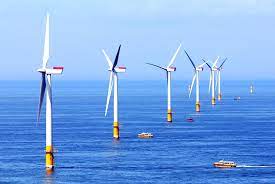The clean energy transition is driven by various technologies that aim to reduce dependence on fossil fuels and mitigate the impacts of climate change. Here are ten technologies that are playing a significant role in powering the clean energy transition:
- Solar Photovoltaic (PV) Systems: Solar PV technology converts sunlight directly into electricity using photovoltaic cells. It has seen significant advancements, becoming more efficient and affordable, and is widely deployed for both utility-scale and distributed generation.
- Wind Turbines: Wind power harnesses the kinetic energy of wind to generate electricity. Large-scale wind turbines, both onshore and offshore, are increasingly deployed worldwide, taking advantage of strong and consistent wind resources.
- Energy Storage: Energy storage solutions, such as batteries, pumped hydro storage, and thermal storage, play a crucial role in balancing intermittent renewable energy generation, improving grid stability, and enabling a higher penetration of renewables.
- Electric Vehicles (EVs): Electric vehicles are replacing conventional internal combustion engine vehicles, reducing greenhouse gas emissions from the transportation sector. EVs rely on advanced battery technologies and are often charged with clean energy sources.
- Smart Grids: Smart grids integrate digital communication and advanced technologies into the electricity grid, enabling bi-directional flows of electricity, optimizing energy use, and accommodating distributed energy resources like solar panels and electric vehicles.
- Advanced Bioenergy: Advanced bioenergy technologies convert organic materials, such as agricultural residues, biomass, and algae, into biofuels and biogas, reducing reliance on fossil fuels in the transportation and industrial sectors.
- Geothermal Energy: Geothermal power harnesses heat from the Earth’s interior to generate electricity or provide heating and cooling. It is a reliable and low-emission renewable energy source, particularly suitable for regions with geothermal resources.
- Hydrogen Fuel Cells: Hydrogen fuel cells convert hydrogen gas into electricity, with water as the only byproduct. They offer clean and efficient power generation, as well as potential applications in transportation and energy storage.
- Carbon Capture and Storage (CCS): CCS technologies capture carbon dioxide emissions from power plants and industrial facilities and store them underground or utilize them for enhanced oil recovery. CCS has the potential to mitigate emissions from existing fossil fuel-based infrastructure.
- Advanced Nuclear Power: Advanced nuclear reactors, such as small modular reactors (SMRs) and next-generation designs, aim to deliver safe, clean, and efficient nuclear power with enhanced safety features, reduced waste, and improved proliferation resistance.
These technologies, along with supportive policies and investments, are driving the global transition towards a cleaner and more sustainable energy future.
SHARE
